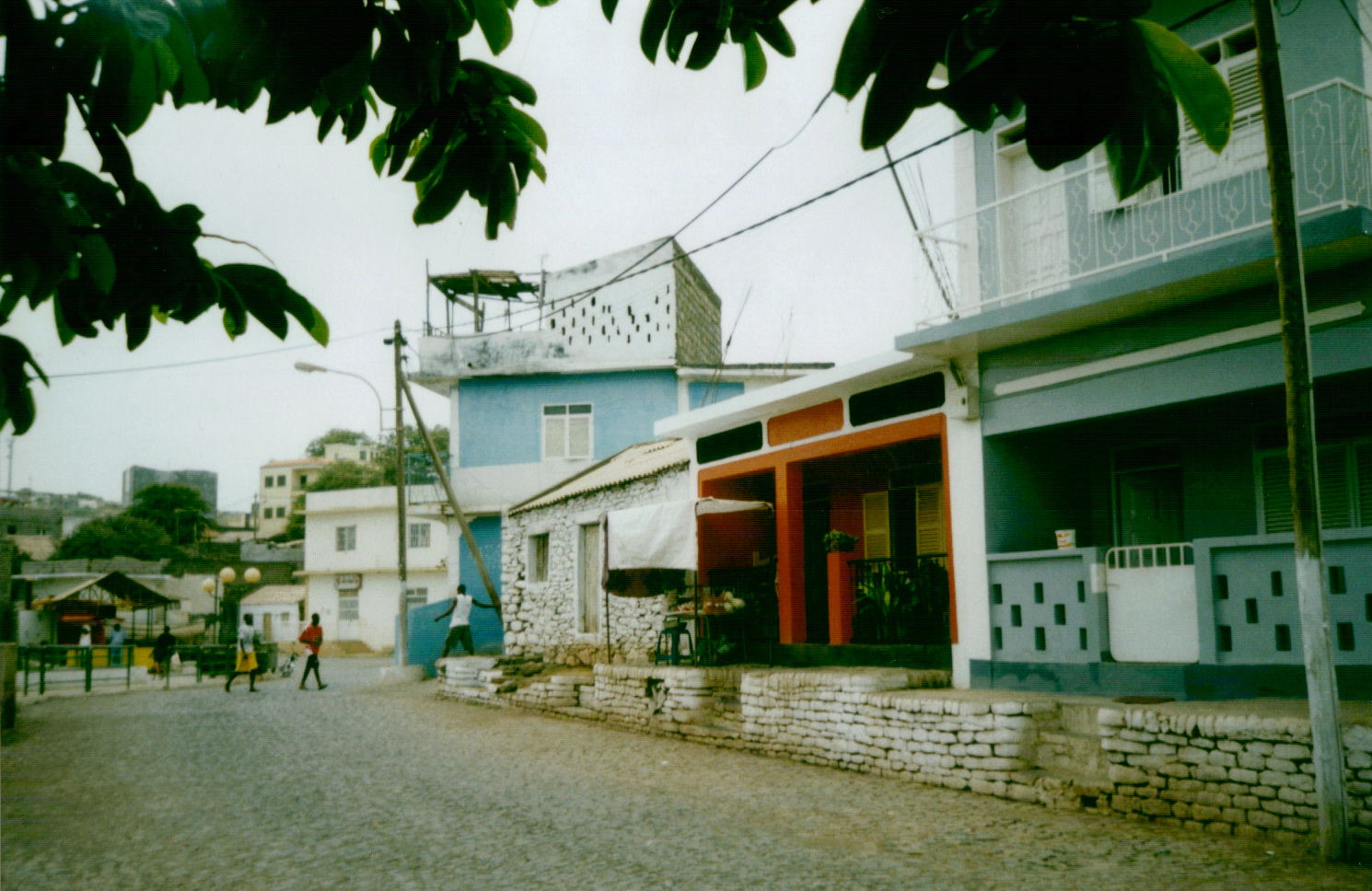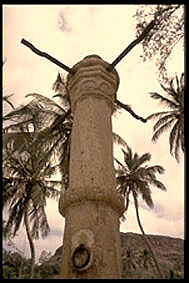|
Montanha Silva
Montanha is a settlement in the central part of the island of Santiago, Cape Verde. It is situated 2 km north of João Teves and 8 km southwest of Pedra Badejo. The area is intensively farmed; mainly maize, beans and sugar-cane. Mahogany trees There are two African mahogany trees near the village of Banana (part of the settlement Montanha), standing at the bottom of the Ribeira Montanha valley, 400 m above sea level. The trees were identified as an Important Bird Area (IBA) by BirdLife International because they support a colony of purple heron The purple heron (''Ardea purpurea'') is a wide-ranging heron species. It breeds in Africa, central and southern Europe, and southern and eastern Palearctic. The Western Palearctic populations migrate between breeding and wintering habitats whe ...s or Bourne's herons. References Villages and settlements in Santiago, Cape Verde São Lourenço dos Órgãos Important Bird Areas of Cape Verde {{CapeVerde- ... [...More Info...] [...Related Items...] OR: [Wikipedia] [Google] [Baidu] |
Santiago, Cape Verde
Santiago (Portuguese language, Portuguese for “James, son of Zebedee, Saint James”) is the largest island of Cape Verde, its most important agricultural centre and home to half the nation's population. Part of the Sotavento Islands, it lies between the islands of Maio, Cape Verde, Maio ( to the east) and Fogo, Cape Verde, Fogo ( to the west). It was the first of the islands to be settled: the town of Ribeira Grande (now Cidade Velha and a UNESCO World Heritage Site) was founded in 1462. Santiago is home to the nation's capital city of Praia. History The eastern side of the nearby island of Fogo, Cape Verde, Fogo collapsed into the ocean 73,000 years ago, creating a tsunami high which struck Santiago. In 1460, António de Noli became the first to visit the island. Da Noli settled at ''Ribeira Grande'' (now Cidade Velha) with his family members and Portuguese from Algarve and Alentejo in 1462. [...More Info...] [...Related Items...] OR: [Wikipedia] [Google] [Baidu] |
Cape Verde
Cape Verde or Cabo Verde, officially the Republic of Cabo Verde, is an island country and archipelagic state of West Africa in the central Atlantic Ocean, consisting of ten volcanic islands with a combined land area of about . These islands lie between west of Cap-Vert, the westernmost point of continental Africa. The List of islands of Cape Verde, Cape Verde islands form part of the Macaronesia ecoregion, along with the Azores, the Canary Islands, Madeira and the Savage Isles. The Cape Verde archipelago was uninhabited until the 15th century, when Portuguese Empire, Portuguese explorers colonized the islands, establishing one of the first Age of Discovery, European settlements in the tropics. Due to its strategic position, Cape Verde became a significant location in the Atlantic slave trade, transatlantic slave trade during the 16th and 17th centuries. The islands experienced economic growth during this period, driven by their role by the rapid emergence of merchants, priva ... [...More Info...] [...Related Items...] OR: [Wikipedia] [Google] [Baidu] |
João Teves
João Teves is a cityCabo Verde, Statistical Yearbook 2015 Instituto Nacional de Estatística (Cape Verde), Instituto Nacional de Estatística, p. 32-33 in the central part of the island of Santiago, Cape Verde, Santiago, Cape Verde. It is situated 19 km northwest of the capital Praia, on the national road from Praia to Assomada (EN1-ST01). It is the seat of São Lourenço dos Órgãos, Cape Verde, São Lourenço dos Órgãos municipality. A source river of the Ribeira Seca (Santiago), Ribeira Seca flows through the town. 
References Cities in Cape Verde São L ...[...More Info...] [...Related Items...] OR: [Wikipedia] [Google] [Baidu] |
Pedra Badejo
Pedra Badejo is a cityCabo Verde, Statistical Yearbook 2015 Instituto Nacional de Estatística (Cape Verde), Instituto Nacional de Estatística, p. 32-33 in the eastern part of the island of Santiago, Cape Verde, Santiago, Cape Verde. It is on the east coast, north of the island capital Praia, southeast of Calheta de São Miguel and east of Assomada. It is the seat of Santa Cruz, Cape Verde, Santa Cruz municipality. At the 2010 census, the town had 9,859 inhabitants.  [...More Info...] [...Related Items...] OR: [Wikipedia] [Google] [Baidu] |
Khaya Senegalensis
''Khaya senegalensis'' is a species of tree in the Meliaceae family that is native to Africa. Common names include African mahogany, dry zone mahogany, Gambia mahogany, khaya wood, Senegal mahogany, ''cailcedrat'', ''acajou'', ''djalla'', and ''bois rouge''. Description African mahogany is a fast-growing medium-sized tree which can obtain a height of up to in height and in diameter. The bark is dark grey to grey-brown while the heartwood is brown with a pink-red pigment made up of coarse interlocking grains. The tree is characterised by leaves arranged in a spiral formation clustered at the end of branches. The white flowers are sweet-scented; the fruit changes from grey to black when ripening. Distribution and habitat The tree is native to Benin, Burkina Faso, Cameroon, Central African Republic, Chad, Ivory Coast, Gabon, Gambia, Ghana, Guinea, Guinea-Bissau, Mali, Niger, Nigeria, Senegal, Sierra Leone, Sudan, Togo, and Uganda. It is found in riparian forests and higher-rain ... [...More Info...] [...Related Items...] OR: [Wikipedia] [Google] [Baidu] |
Important Bird Area
An Important Bird and Biodiversity Area (IBA) is an area identified using an internationally agreed set of criteria as being globally important for the conservation of bird populations. IBA was developed and sites are identified by BirdLife International. There are over 13,000 IBAs worldwide. These sites are small enough to be entirely conserved and differ in their character, habitat or ornithological importance from the surrounding habitat. In the United States the program is administered by the National Audubon Society. Often IBAs form part of a country's existing protected area network, and so are protected under national legislation. Legal recognition and protection of IBAs that are not within existing protected areas varies within different countries. Some countries have a National IBA Conservation Strategy, whereas in others protection is completely lacking. History In 1985, following a specific request from the European Economic Community, Birdlife International dr ... [...More Info...] [...Related Items...] OR: [Wikipedia] [Google] [Baidu] |
BirdLife International
BirdLife International is a global partnership of non-governmental organizations that strives to conserve birds and their habitats. BirdLife International's priorities include preventing extinction of bird species, identifying and safeguarding important sites for birds, maintaining and restoring key bird habitats, and empowering conservationists worldwide. It has a membership of more than 2.5 million people across List of BirdLife International national partner organisations, 116 country partner organizations, including the Royal Society for the Protection of Birds, the Wild Bird Society of Japan, the National Audubon Society, and American Bird Conservancy. BirdLife International has identified 13,000 Important Bird Area, Important Bird and Biodiversity Areas and is the official International Union for Conservation of Nature's IUCN Red List, Red List authority for birds. BirdLife International has established that 1,375 bird species (13% of the total) are threatened with extinc ... [...More Info...] [...Related Items...] OR: [Wikipedia] [Google] [Baidu] |
Bird Colony
A bird colony is a large congregation of individuals of one or more species of bird that nest or roost in proximity at a particular location. Many kinds of birds are known to congregate in groups of varying size; a congregation of nesting birds is called a breeding colony. Colonial nesting birds include seabirds such as auks and albatrosses; wetland species such as herons; and a few passerines such as weaverbirds, certain blackbirds, and some swallows. A group of birds congregating for rest is called a communal roost. Evidence of colonial nesting has been found in non- neornithine birds (Enantiornithes), in sediments from the Late Cretaceous (Maastrichtian) of Romania. Variations on colonial nesting in birds Approximately 13% of all bird species nest colonially. Nesting colonies are very common among seabirds on cliffs and islands. Nearly 95% of seabirds are colonial, leading to the usage, seabird colony, sometimes called a rookery. Many species of terns nest in colonies ... [...More Info...] [...Related Items...] OR: [Wikipedia] [Google] [Baidu] |
Purple Heron
The purple heron (''Ardea purpurea'') is a wide-ranging heron species. It breeds in Africa, central and southern Europe, and southern and eastern Palearctic. The Western Palearctic populations migrate between breeding and wintering habitats whereas the African and tropical-Asian populations are primarily sedentary, except for occasional dispersive movements. It is similar in appearance to the more common grey heron but is slightly smaller, more slender and has darker plumage. It is also a more evasive bird, favouring densely vegetated habitats near water, particularly reed beds. It hunts for a range of prey including fish, rodents, frogs and insects, either stalking them or standing waiting in ambush. Purple herons are colonial breeders and build a bulky nest out of dead reeds or sticks close to the water' edge among reeds or in dense vegetation. About five bluish-green eggs are laid and are incubated by both birds. The young hatch about four weeks later and fledge six weeks a ... [...More Info...] [...Related Items...] OR: [Wikipedia] [Google] [Baidu] |
Villages And Settlements In Santiago, Cape Verde
A village is a human settlement or Residential community, community, larger than a hamlet (place), hamlet but smaller than a town with a population typically ranging from a few hundred to a few thousand. Although villages are often located in rural areas, the term urban village is also applied to certain urban neighborhoods. Villages are normally permanent, with fixed dwellings; however, transient villages can occur. Further, the dwellings of a village are fairly close to one another, not scattered broadly over the landscape, as a dispersed settlement. In the past, villages were a usual form of community for societies that practice subsistence agriculture and also for some non-agricultural societies. In Great Britain, a hamlet earned the right to be called a village when it built a Church (building), church. [...More Info...] [...Related Items...] OR: [Wikipedia] [Google] [Baidu] |
São Lourenço Dos Órgãos
SAO or Sao may refer to: Places * Sao civilisation, in Middle Africa from 6th century BC to 16th century AD * Sao, a town in Boussé Department, Burkina Faso * Serb Autonomous Regions (''Srpska autonomna oblast'', SAO), during the breakup of Yugoslavia Science and technology * Smithsonian Astrophysical Observatory of the Smithsonian Institution in Cambridge, Massachusetts, U.S. ** Smithsonian Astrophysical Observatory Star Catalog, which assigns SAO catalogue entries * Special Astrophysical Observatory of the Russian Academy of Science (SAO RAS) * Session-At-Once, a recording mode for optical discs Transportation * Saco Transportation Center, a train station in Saco, Maine, U.S., station code SAO * Sahel Aviation Service, Mali, ICAO airline code SAO * Airports in Greater São Paulo, Brazil, IATA airport code SAO People * Ligi Sao (born 1992), a Samoan rugby league player * Ron Sao, Western Australian politician Other uses * Sao (moon), a satellite of Neptune * Sao (my ... [...More Info...] [...Related Items...] OR: [Wikipedia] [Google] [Baidu] |





